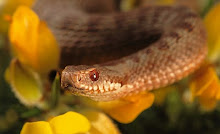You will find a link below to my latest wildlife column. This colour on-line edition will only be available for one week, so I have copied the text below also.
http://edition.pagesuite-professional.co.uk/launch.aspx?referral=other&refresh=f09ENo162Bi1&PBID=dc43da64-0fec-4776-a517-22780c4ae1fd&skip=
Wildlife Management
The vast majority of our wildlife is capable of sustaining and managing itself. However, we now live in a world where deforestation and loss of habitat is making life very hard for a great number of our wildlife species.
Wildlife management takes many forms, but the one that has to be the most unpopular with animal lovers and with people who do not understand the importance of it has to be the culling of certain species.
Personally I don’t like this word as it gives the impression that an entire species is going to be wiped out. The term wildlife management instead of cull is more appropriate IMO.
Up until the 12th century, wolves roamed much of Britain without much of a threat from man and they helped with the natural process of predation. Edward the First ordered the extermination of the wolf in 1281 and by the late 16th to the early 17th century they were extinct from British soil. This may seem like a long time, but it has been reported that there were around 10,000 wolves in Britain at their peak and the mature breeding females from 10,000 wolves would have produced a lot of offspring every year!
The extinction of this animal in Britain left other animals like the deer with no natural predators. As a result, Scotland now has a problem with red deer and as the area is so vast, culling is proving inadequate. Talks are still continuing on the reintroduction of wolves to help with this problem.
In the Forest and Wye Valley, fallow and muntjac deer have one fawn per year, per doe whereas roe deer doe’s have two, usually of different sexes. The management of this species is easier when compared with a species that is capable of producing multiple offspring. Wild boar sows typically have between 3 and 8 young per sow, per year in the wild and although uncommon they can sometimes have two litters per year.
From these statistics alone, I don’t have to explain how this species could breed out of control if not managed.
I talked briefly about balance in my last article and this is a good example of how balance works, but also how it can be damaged. If we eradicate a predator, we must take over the management of the prey species or they will over populate and the consequences can be unimaginable. The species would become weak from lack of food and disease would then spread quickly throughout that species. In turn the disease could easily be transmitted to our other wildlife and even domestic animals.
No animal lover likes the thought of our wildlife being shot, but we must think logically and support the management of our wildlife.
One more thought. It is a long way off, but even if the wild boars become accepted in the Forest and Wye Valley, their numbers would still need to be controlled every year.
Rob
Wednesday, 18 August 2010
Wildlife Management
Labels:
culling,
fallow deer,
muntjac,
red deer,
roe deer,
wild boar,
wildlife management,
wolf
Subscribe to:
Post Comments (Atom)







Well said, a voice of wisdom, but the 'do gooders' will probably shout it down and cause more problems as usual!
ReplyDeleteYes predators should possibly be brought back, but how will modern non-nature people exist with them now? Our instincts have be dulled by modern life. Imagine the uproar when a wolf takes the first baby from a pram at a park somewhere? Angry cries heard across the land 'kill them, kill them all'.
Thanks Richard and yes and I can understand their fears, but as you said, we are now ruled by modern life - The closest the vast majority of our youngsters come to wildlife today, is shooting it on a video game!
ReplyDeleteEducation is the only way forward for nature lovers and non-nature lovers.
Respect for our wildlife comes out of our love and passion for it. Maybe one day the majority will not be sat on the fence like they are today and will actually speak out, giving our wildlife a better chance of being accepted and survival.
Okay, people aren't going to like this, but I find it ironic that one species (us) that can't control its own numbers, finds it necessary to cull other species.
ReplyDeleteWe're reproducing at such a rate we're driving other species to extinction. No, I wouldn't suggest a human cull, of course not, but we're the one species that needs to cut down its reproductive proclivities - something we can do, unlike other species.